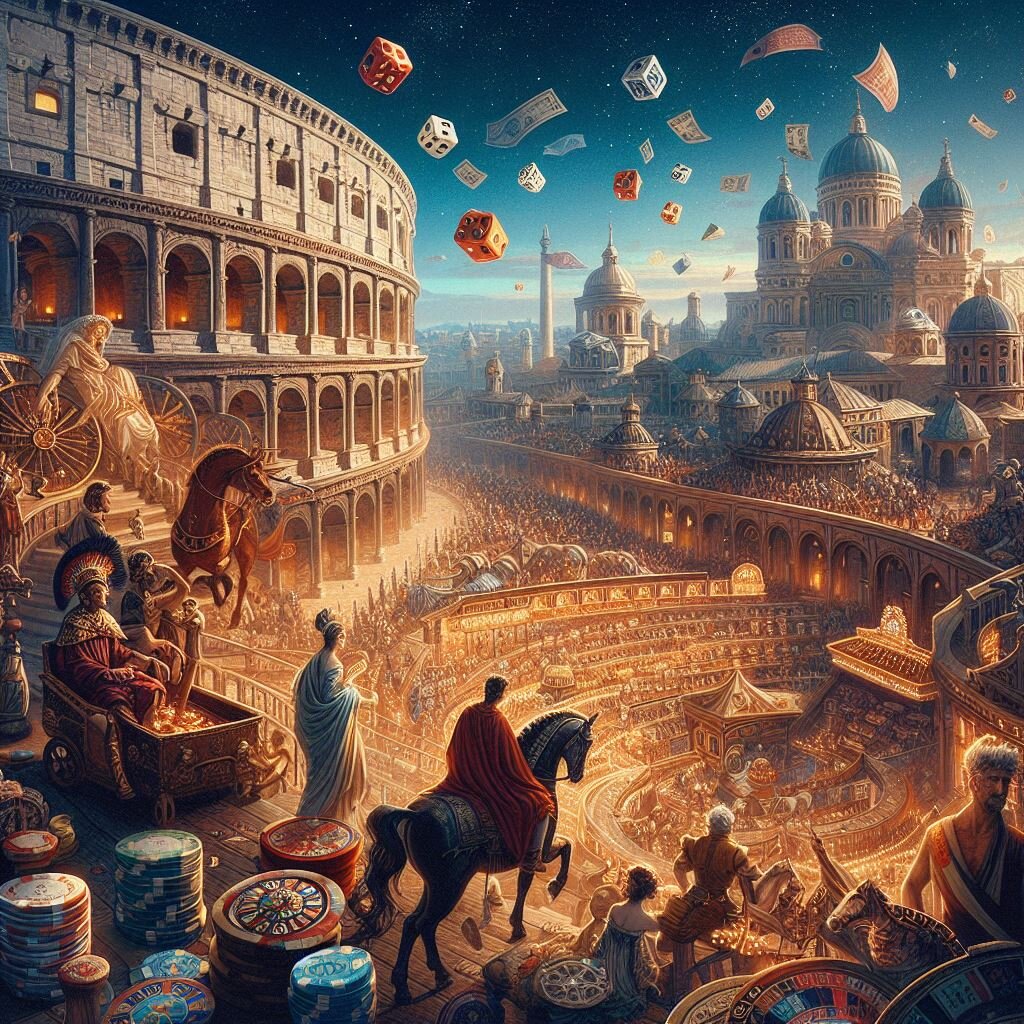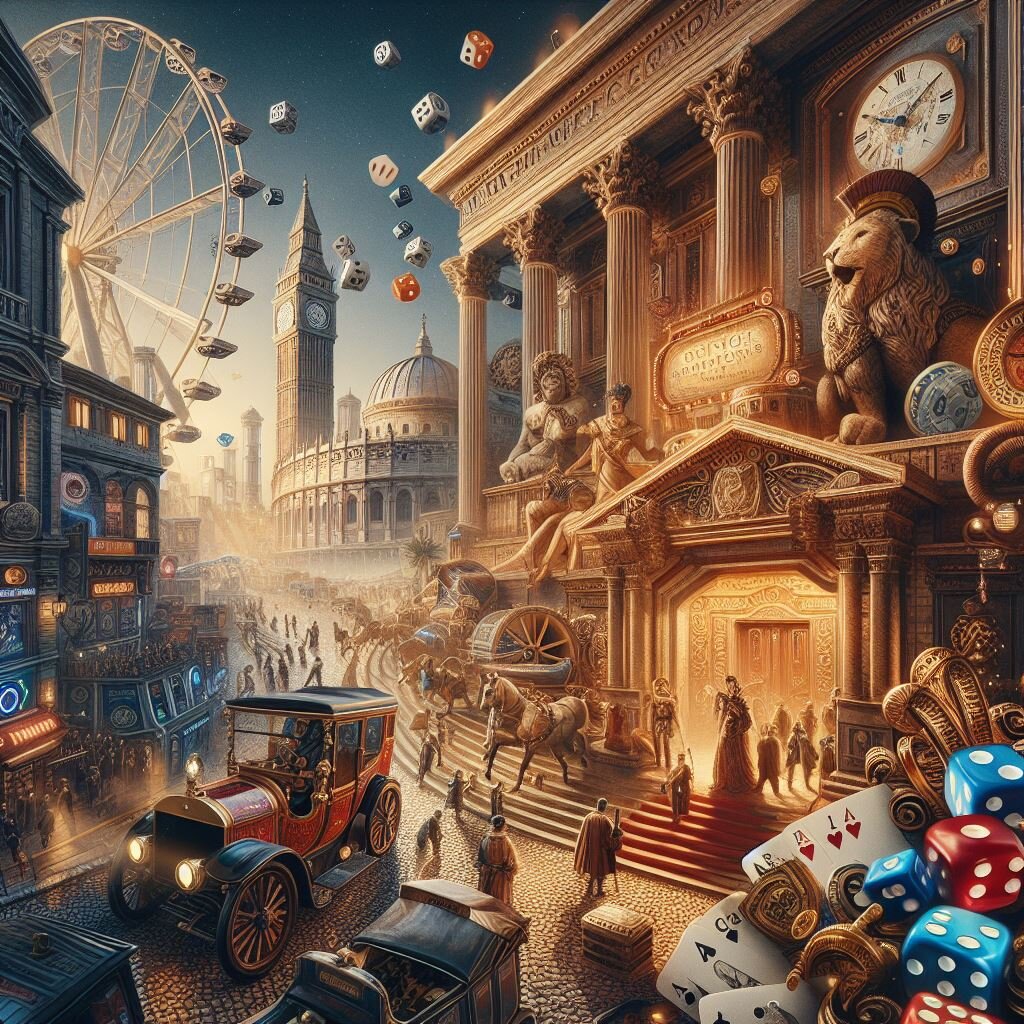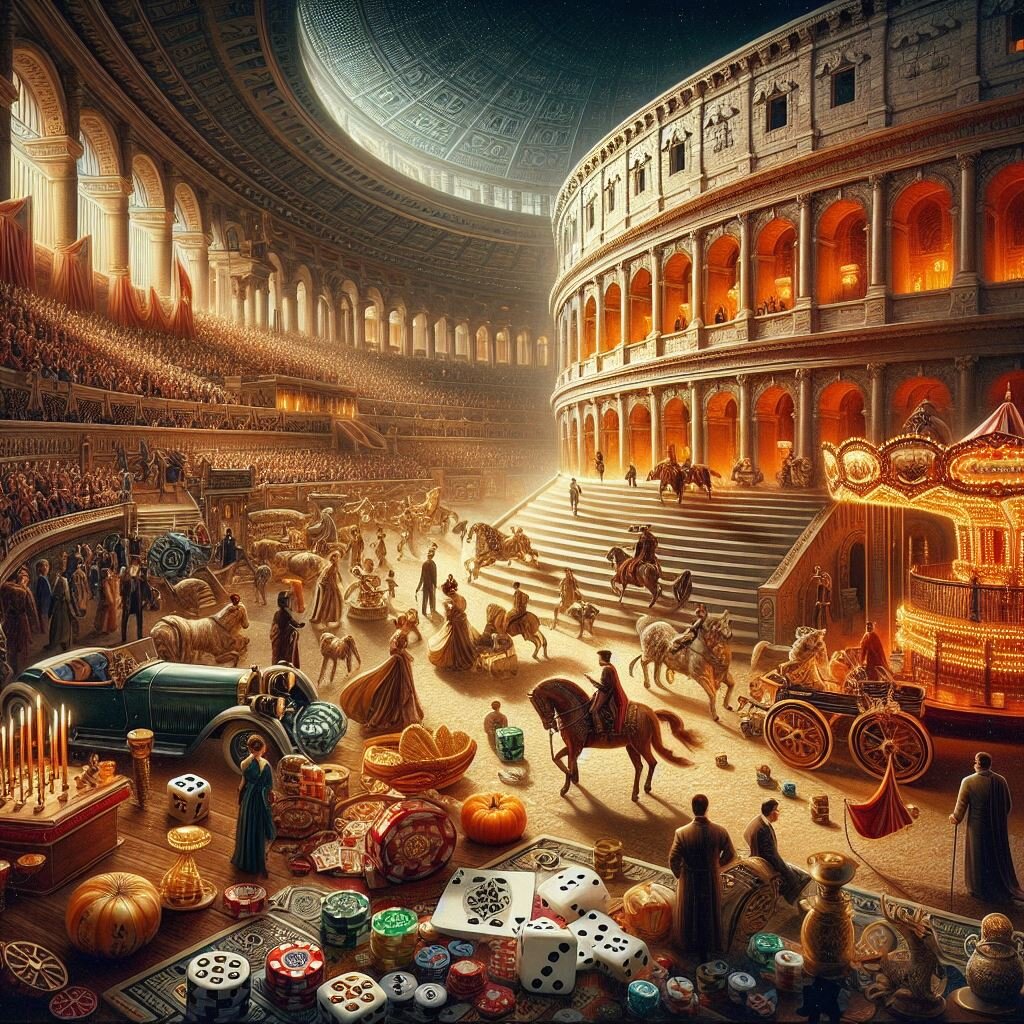seputar-kppn.com – Embark on a fascinating journey through time as we trace the evolution of gambling from its origins in Ancient Rome to the bustling casinos of the modern era. In this concise historical exploration, we’ll uncover the cultural, social, and economic forces that have shaped the development of gambling throughout the ages, offering insights into its enduring popularity and widespread appeal.
Ancient Rome Origins:
The roots of gambling can be traced back to ancient civilizations, where games of chance were often intertwined with religious rituals and cultural traditions. In Ancient Rome, for example, dice games were a common form of entertainment, with citizens gathering in public squares to wager on the outcome of dice rolls. These early forms of gambling provided not only amusement but also served as a means of social interaction and community bonding.
Medieval Europe and the Renaissance:
During the Middle Ages, gambling continued to flourish in Europe, albeit under the watchful eye of religious authorities who often viewed it with suspicion. Despite attempts to regulate or prohibit gambling, it remained a popular pastime among nobles and commoners alike. The Renaissance saw a resurgence of interest in games of chance, with card games such as poker and blackjack gaining popularity among the upper classes.
The Age of Exploration and Colonization:
The expansion of European empires during the Age of Exploration brought gambling to new shores, as explorers and colonists introduced card games and other forms of gambling to the Americas, Asia, and Africa. In colonial America, lotteries were established as a means of raising funds for public projects, while gambling houses and saloons became fixtures of frontier towns.


The Industrial Revolution and Beyond:
The Industrial Revolution of the 19th century ushered in a new era of technological innovation and economic prosperity, laying the groundwork for the modern gambling industry. Advances in transportation and communication made it easier for people to travel to casinos and betting parlors, while the invention of the slot machine in the late 19th century revolutionized the way people gambled.
The Rise of Modern-Day Casinos:
In the 20th century, the legalization and proliferation of casinos transformed gambling into a multi-billion-dollar industry, with Las Vegas emerging as the epicenter of casino culture. Today, Ancient Rome casinos around the world offer a wide range of games and amenities, catering to diverse audiences and attracting millions of visitors each year. From the opulent casinos of Macau to the glitzy resorts of the Las Vegas Strip, gambling continues to captivate and enthrall people from all walks of life.
Conclusion:
From its humble origins in ancient Rome to its modern-day incarnation as a global industry, gambling has undergone a remarkable evolution throughout history. While the games and venues may have changed, the allure of gambling remains as strong as ever, offering excitement, entertainment, and the chance to win big. As we reflect on this concise historical journey, we gain a deeper appreciation for the enduring appeal of gambling and its role in shaping the world we live in today.
FAQs
1. What does the historical journey cover?
This historical journey traces the origins of gambling and gaming practices from ancient civilizations like Rome, Greece, and China to the emergence of modern-day casinos. It explores the development of various games of chance and skill, the rise of gambling establishments, and the evolution of casino culture over time.
2. Who is this historical journey intended for?
This historical journey is intended for anyone curious about the origins and development of gambling and gaming throughout history. Whether you’re a history enthusiast, a casino aficionado, or simply interested in learning about the cultural significance of games of chance, this journey offers valuable insights for all.
3. What key historical milestones are highlighted?
“From Ancient Rome to Modern-Day Casinos” highlights key historical milestones in the evolution of gambling, including the establishment of ancient gambling houses, the popularity of games like dice and cards in medieval Europe, the emergence of the first modern casinos in the 17th century, and the globalization of casino gaming in the 20th and 21st centuries.
4. How can readers benefit from this historical journey?
Readers can benefit from “From Ancient Rome to Modern-Day Casinos” by gaining a deeper understanding of the historical context and cultural significance of gambling and gaming practices. By tracing the development of these activities over time, readers can gain insights into their societal impact and evolution into the multimillion-dollar industry we see today.
5. Is this historical journey suitable for casual readers?
Yes, “From Ancient Rome to Modern-Day Casinos” is designed to be accessible to casual readers with an interest in history and gambling. The journey is presented in a concise and engaging format, making it easy for readers to follow along and appreciate the rich tapestry of human experience that spans millennia of gaming history.
